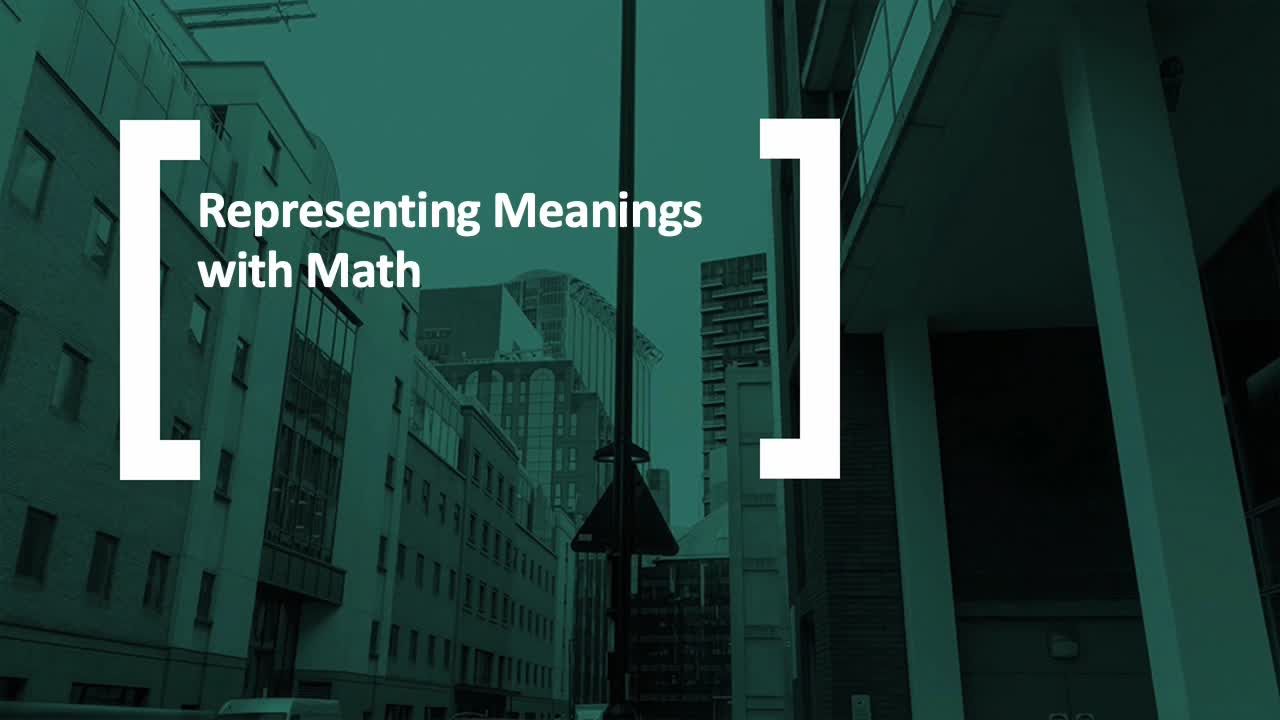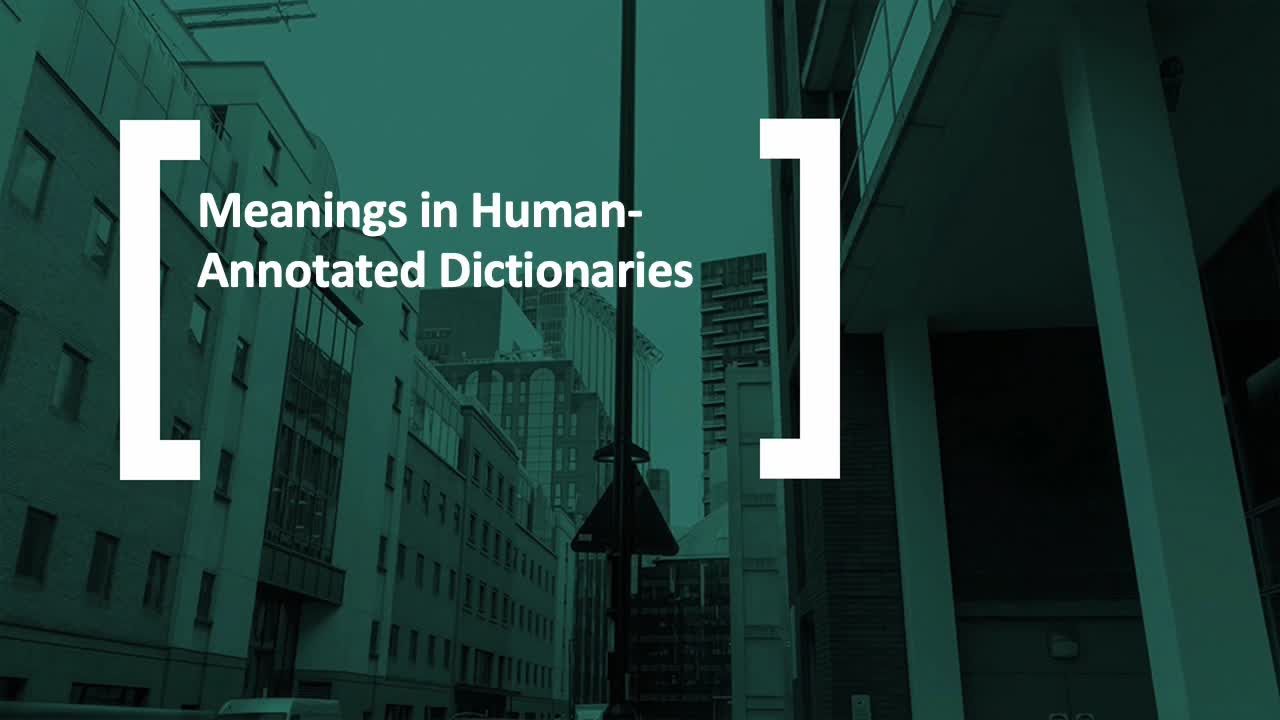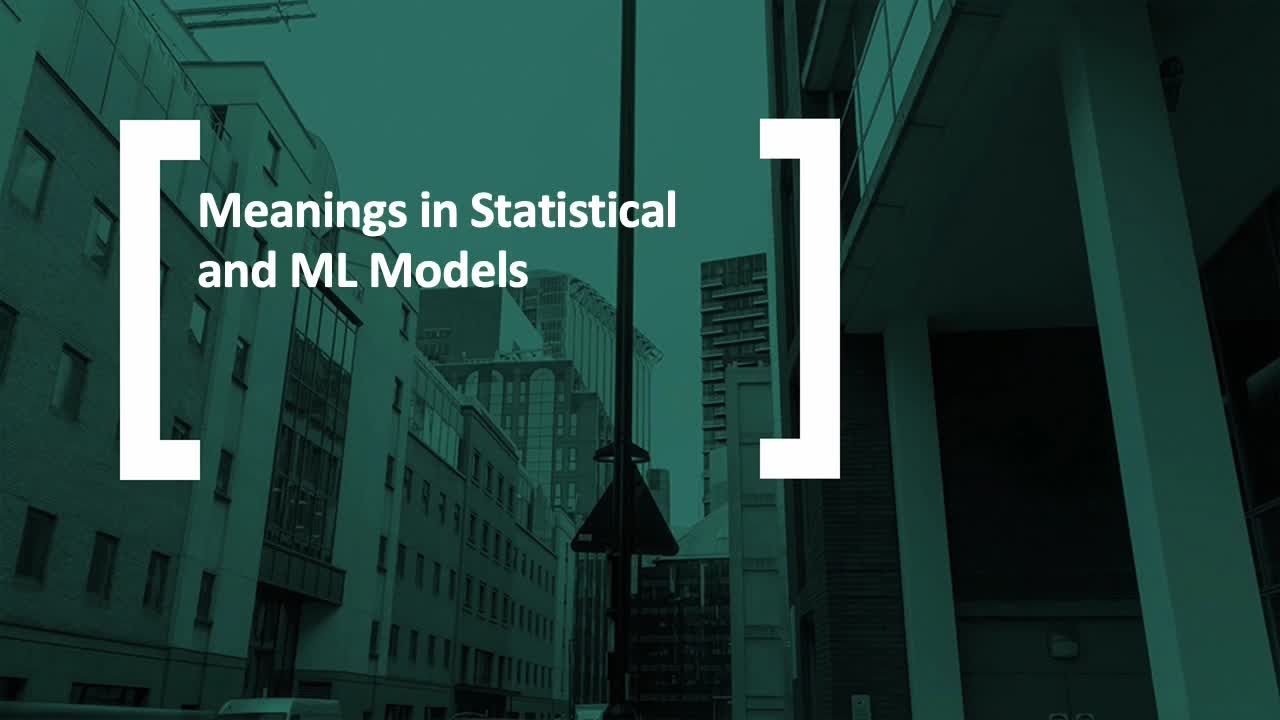In this block, the attention revolves around the analytical and computational strategies to model the meaning included in a corpus of text: i) human-annotated dictionaries, and ii) word vectors. A series of examples and Python scripts show how to leverage human-annotated dictionaries and learn word vectors using text corpora regarding organizations and markets
Summary
Open the circle: learn core NLP aspects
Get the decks & videos 


Representing Meanings with Math
Meanings and Distributional Representations
Meanings in Human- Annotated Dictionaries
Meanings in Statistical and ML Models
Readings for NLP nerds 
On BoW
Zhang, Yin, Rong Jin, and Zhi-Hua Zhou. "Understanding bag-of-words model: a statistical framework." International Journal of Machine Learning and Cybernetics
1, no. 1 (2010): 43-52
On TFIDF
Robertson, Stephen. "Understanding inverse document frequency: on theoretical arguments for IDF." Journal of documentation
(2004).
Test your learning
NLP application examples
The examples I report cut across different domains, such as marketing, operations, and people analytics. Hopefully, you’ll find these materials helpful. A good number of the papers are freely accessible from the publisher’s website. For the remaining papers, give it a try with Google Scholar — good luck!
Bag of words applications
TFIDF applications
Make things happen with Python
Off-the-shelf Python scripts
Problem set
Close the circle by analyzing a case study
09:10









